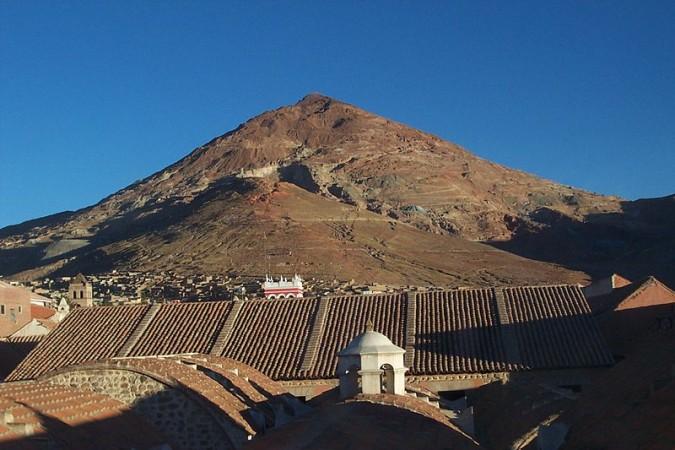
Covered in dust and sweat, Marco shovels rocks into a wheelbarrow inside a mine, which is known for the incredible number of lives it claims every month.
Sometimes Marco starts his work at 2 O'Clock in the morning, so that he can finish his eight-hour shift and go to school.
"I want to be something better, not work in the mine… I'd like to get a degree, to be a lawyer," Marco told BBC's Catharina Moh, who worked to produce the documentary "Our World".
"Our World" reveals the story of thousands of men who work in the 500-year-old mines of Bolivia's Cerro Rico mountain, famous for producing the silver which helped finance the Spanish empire.
After centuries of exploitation, the mines have now turned into a death trap for the workers who have resorted to devil worship for their safety.
According to a recent report in The New York Times, back in June, Unesco had warned that the mountain faced a critical risk of collapse at its summit.
"Since the internal structure of the upper part of the Cerro Rico is severely weakened due to continuous exploitation there is a significant risk that miners could die from collapses inside the tunnels," it stated.
Following the warning, the government did plan to shut down the mines but many workers did not want to leave. The reason being though the government had offered to move them to new mines, there is no guarantee that those would be as lucrative as the one in which they are working now.
"What worries us is leaving here, going far away, leaving our families behind," 45-year-old Gregorio Alave was quoted as saying by NYT. "We will have to fight with the government to get a good mine."
While skepticism keeps miners from leaving the place, which is no less than a living hell, the horrendous tales of the lives of many others have been brought to the front by BBC in its latest endeavor.
Marco, who lives with his mother and three siblings at the entrance of one of the tunnels, is just one among the estimated 15,000 others who work on the mountain, knowing that death is just around the corner for them. The place has an average life expectancy of 40, and the risk of death is so high that around 14 women are widowed every month.
Apart from accidents which are caused due to the structure of the mountain, a major concern for those who work there is Silicosis, a disease caused due to breathing in dust. Men as young as 20 die of Silicosis in the mines.
"You eat the dust, it goes into your lungs and attacks you," Olga, a single mother whose sons Luis (14) and Carlos (15) work in the mine, was quoted as saying.
The workers are also at high risk of being intoxicated by the hazardous gas released by the rocks in the mines.
"Your feet get weaker and you get a headache," explains 15-year-old Carlos. "The gas is what is left behind after the dynamite explodes."
Teenagers are far from the youngest lots of the worker groups. Though illegal, children as young as eight to 10 are also among the working force on the mountain.
A total of 145 children reportedly work as miners, according to a report by Bolivia's ombudsman, while another estimate puts the number of children employed on the mountain at 400.
The continuously rising death toll on the mountain has lead the workers and their families to resort to superstitions and devil worship for prolonged life.
The workers pray to El Tio, the devil god, and also make offerings of Coca leaves, cigarettes and alcohol to him. There apparently is an idol of El Tio at each tunnel of the 38 businesses running mines on the mountain.
"Usually we gather here on Fridays to make offerings, in gratitude because he gave us lots of minerals, and so that he will protect us from accidents. Outside the mine we are Catholics, and when we enter the mine, we worship the devil," says Grover, Marco's boss.
















